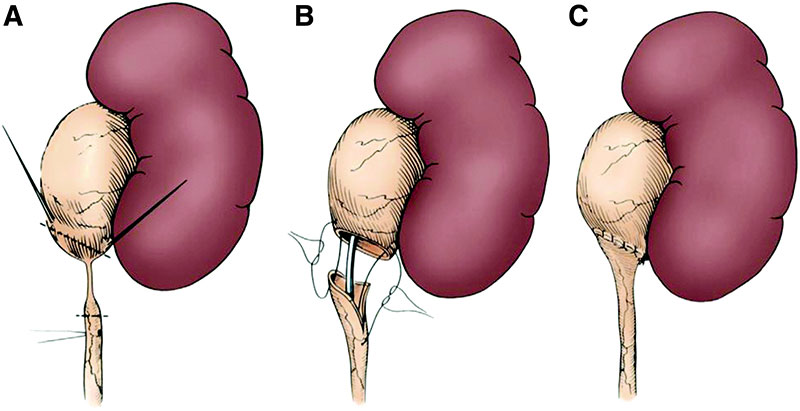

Pyeloplasty is a surgical procedure performed to correct a ureteropelvic junction (UPJ) obstruction, which is a blockage where the renal pelvis (the area where urine collects in the kidney) meets the ureter (the tube that carries urine to the bladder). The procedure involves removing the obstructed or narrowed segment and reconnecting the healthy portion of the renal pelvis to the ureter, restoring normal urine flow.
Indications for Pyeloplasty
- Congenital Ureteropelvic Junction (UPJ) Obstruction: Common in children, often diagnosed prenatally.
- Acquired UPJ Obstruction: Due to kidney stones, infections, trauma, or surgical scarring.
- Hydronephrosis: Swelling of the kidney caused by urine buildup due to obstruction.
- Recurrent Urinary Tract Infections (UTIs): Associated with persistent UPJ obstruction.
How is Pyeloplasty Performed?
- Preoperative Evaluation: Renal scans (MAG3 or DTPA) to evaluate the severity of obstruction.
- Anesthesia: Performed under general anesthesia.
Benefits of Pyeloplasty
- Restores Normal Urine Flow
- Prevents Hydronephrosis and Infections
- Minimally Invasive Options Available
- High Success Rate
Pyelolithotomy is a highly effective procedure for managing large or complex kidney stones that cannot be treated with less invasive methods. While open pyelolithotomy remains an option for severe cases, laparoscopic pyelolithotomy offers a minimally invasive alternative, resulting in faster recovery and reduced post-operative discomfort.